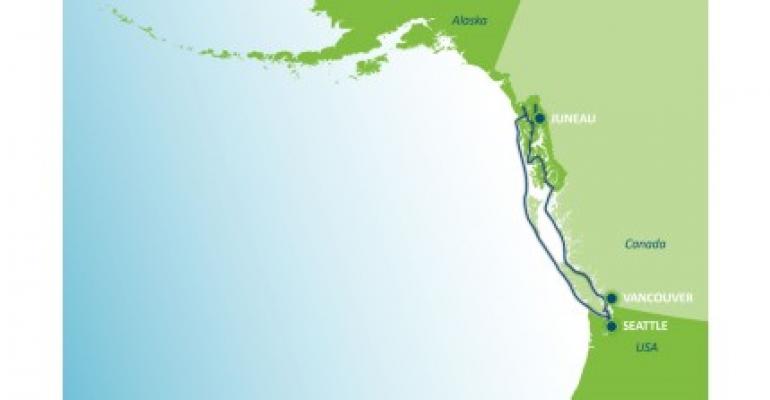This virtual meeting will look at how the effort may be organized and governed and potential milestones to set — all elements that could go into creating a charter, Steve Metruck, executive director, Port of Seattle, told Seatrade Cruise News.
Victoria, Sitka and Skagway are in
The initiative now includes the ports of Victoria, BC; Sitka and Skagway along with the earlier announced first movers Seattle and Vancouver, Carnival Corp. & plc, Royal Caribbean Group, Norwegian Cruise Line Holdings and Cruise Lines International Association. Further first movers include the Global Maritime Forum, Blue Sky Maritime Coalition and Washington Maritime Blue.
'It took some work to get to this but now the hard work begins,' Metruck said.
As background, he explained Seattle aspires be the greenest port in North America. (So does Vancouver.) Last year the Port of Seattle Commission voted to accelerate its emission reduction efforts by 10 years to be net zero or better for port-owned emissions by 2040. Its interim goal is to reduce greenhouse gases 50% by 2030.
Clydebank Declaration
The port always wants to do more, Metruck said, so the Clydebank Declaration for green shipping corridors was an 'aha' moment, crystallizing how to put together the pieces for a regional approach that goes beyond Puget Sound.
'The idea of a green corridor really struck a chord with us,' Metruck said. It's a globally recognized effort that people can rally around.
He pointed to the long history between Seattle and the ports in Canada and Alaska that dates back to the Gold Rush era. Now cruising unites these ports. So a cruise-led green corridor seemed natural.
Not limited to cruise ships
'It's not limited to cruise,' Metruck said, but the idea is to focus on cruise to create a road map that can be expanded to other maritime sectors.
Green corridors — zero-emission maritime routes between two or more ports — were conceived in the Clydebank Declaration at COP26 in November 2021. The 24 signatories, including the US and Canada, set the goal of establishing at least six by the middle of this decade, while aiming to scale activity up in the following years by supporting more routes, longer routes and/or more ships on the same routes. The aspiration is for 'many more corridors' in operation by 2030.
The ports of Los Angeles and Shanghai became the first to partner on a green corridor for the trans-Pacific, one of the world's busiest maritime trade routes, by 2030.
That was followed, a few weeks ago, by the announcement of plans to explore the feasibility of the first cruise-led green corridor for the Seatte-Vancouver-Alaska route.
Pandemic brought ports closer together
'The pandemic brought us closer together,' Metruck said of the region's ports. After the 2020 shutdown, Seattle began looking at how it could safely return to cruising in 2021 under the Centers for Disease Control and Prevention's COVID-19 framework.
'The groundwork we laid in those relationships led to natural discussions about sustainability and the concept of exploring the feasibility of a green corridor,' he said.
The parties were quick to buy in: 'Everybody knows this is where the future lies, and to be a first mover on this, there was a lot of interest in that.'
No one knows what decarbonization solutions will be used in the green corridor.
'It's a difficult problem,' Metruck said. But by uniting on this challenge, it gives a focus.
'An urgency to think what's possible'
'There's an urgency to think what's possible. We've set our own goals and the cruise lines have theirs. We hope we can accelerate efforts ... We're going to learn a lot here and understand more as we undertake the effort.'
Meanwhile, Seattle's discussions continue with major global ports like Los Angeles and Rotterdam, to share information and learnings. Metruck noted some parties, primarily in Japan, are advancing hydrogen as a solution. The Port of Seattle is involved in a hydrogen storage study with the Pacific Northwest National Laboratory and the local utility, Seattle City Light. 'Hydrogen will be an important part of the whole ecosystem,' he said.
Concentric circles
Going forward, the number of Pacific Northwest green corridor participants remains to be seen. Metruck envisions 'concentric circles. You need the core group but you have to involve other entities, especially as you get into operations.'
Washington state's Maritime Blue, a nonprofit to support the blue economy, is in, and Metruck hopes private sector innovators and entrepreneurs get involved.
'This is a big deal,' he said. It 'gives us something to focus on in the cruise industry,' which is working on a variety of efforts with a commitment to net zero carbon emissions by 2050.
With a cruise-led green corridor, 'We would like to be the lead in demonstrating and prototyping.'
Cruise group first movers include Carnival Corp. & plc. Here, Steve Metruck, far left, with Jan Swartz, Arnold Donald and Gus Antorcha
'You can only do so much at a single port level or as a single cruise line,' Metruck continued. 'The fact we've got the [companies] we have — Carnival, Royal Caribbean, Norwegian — and CLIA signing on means we're in this together. We know this is the future. This collaborative approach increases our ability to achieve the goal, which is a global goal to reduce greenhouse gases.'
Copyright © 2024. All rights reserved. Seatrade, a trading name of Informa Markets (UK) Limited.
Add Seatrade Cruise News to your Google News feed.  |

